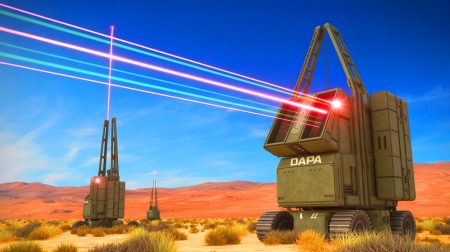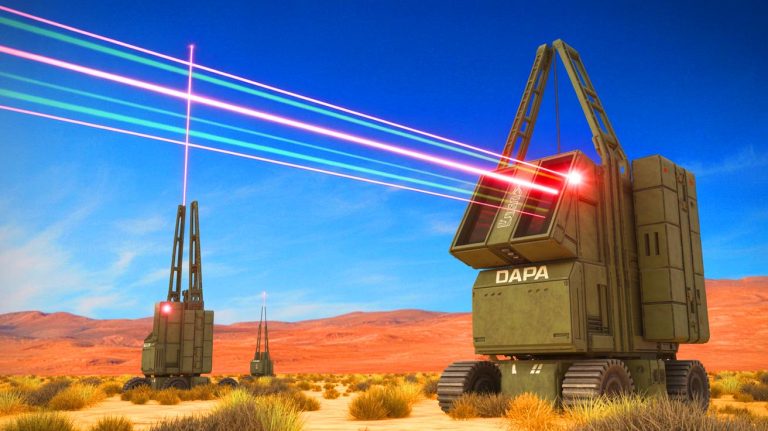| IN A NUTSHELL |
|
In a groundbreaking step forward, the U.S. military has set a new standard in the realm of wireless power transmission. The Defense Advanced Research Projects Agency (DARPA) recently achieved an extraordinary feat by transmitting a laser carrying over 800 watts of power across a vast distance of 5.3 miles. This remarkable achievement not only breaks previous records but also holds the potential to revolutionize how we think about power delivery, especially in remote or hard-to-reach areas. The implications of this technology extend far beyond its current uses, highlighting a future where energy can be delivered almost instantaneously.
The Breakthrough in Wireless Power Transmission
DARPA’s recent experiment is a significant milestone in the pursuit of wireless power transmission, a concept that has fascinated scientists for over a century. The successful beaming of power over 5.3 miles marks a notable advancement from previous records. Initially, the POWER program managed to transmit 230 watts over a distance of 1 mile, followed by a lesser-known successful attempt spanning 2.3 miles. This latest achievement is not just about setting records; it signifies a major leap toward realizing the dream of instantaneous power delivery.
At the heart of this achievement is a sophisticated optical power beaming receiver. The laser beam, transmitted with a 20% efficiency rate, traveled across a considerable distance before reaching its target. Upon arrival, the beam passed through a small aperture and was reflected off a parabolic mirror onto solar cells. This process not only demonstrated the feasibility of the technology but also showcased its potential for practical applications, such as powering unmanned aerial vehicles in the future.
Historical Context: From Tesla to Today
The dream of wireless power transmission is not new. It dates back to the early 20th century and the visionary work of Nikola Tesla. Tesla’s Wardenclyffe Tower, constructed in 1901, was intended to be the first node in a World Wireless System capable of beaming power globally. Despite the ambitious vision, technical challenges and financial difficulties meant that Tesla’s project was never completed. However, the idea lived on, inspiring generations of scientists and engineers to continue pursuing this elusive goal.
Today, the interest in wireless power transmission has been rekindled, driven by both military needs and the potential for space-based solar power systems. These systems could harness the sun’s energy in space, where it is exponentially more intense than on Earth’s surface, and transmit it back to Earth. The recent advances by DARPA not only build on Tesla’s pioneering vision but also open up new possibilities for energy generation and distribution in the modern age.
Applications and Implications for the Military
The military applications of this technology are particularly compelling. Energy is a critical resource in military operations, and delivering it to remote or hostile environments is often fraught with challenges. Currently, energy delivery to battlefields and disaster-stricken areas is a resource-intensive process that can be both slow and risky. The ability to beam power instantly to where it is needed could transform military logistics and operational capabilities.
Moreover, the recent tests, known as the POWER Receiver Array Demo (PRAD), are pivotal steps toward achieving this vision. By demonstrating the viability of wireless power beaming over significant distances, DARPA is paving the way for future implementations that could drastically enhance military capabilities. As the technology continues to mature, it promises to reduce logistical burdens and increase the efficiency of energy distribution in critical scenarios.
Future Prospects and Challenges
While the potential of wireless power transmission is vast, several challenges remain. The efficiency of power transmission, currently at around 20%, needs to be improved for widespread adoption. Additionally, the technology must be scaled to accommodate larger power needs and longer distances. Researchers are now focusing on testing power beaming across multiple connected relays and vertical transmission, where the atmosphere is thinner and more conducive to efficient energy transfer.
As these technical challenges are addressed, the future prospects of wireless power transmission look bright. Beyond military applications, the technology holds promise for civilian use, potentially revolutionizing how we think about energy distribution. Imagine a world where power can be sent instantly to disaster zones, remote villages, or even space colonies. The possibilities are endless, and the journey toward realizing them has only just begun.
In conclusion, DARPA’s recent advancements in wireless power transmission mark a significant step toward a future where energy can be delivered quickly and efficiently across vast distances. This breakthrough is a testament to the power of innovation and the enduring human quest to overcome seemingly insurmountable challenges. As we look ahead, the question remains: How will this technology reshape our world, and what new frontiers of energy transmission will we explore next?
Did you like it? 4.7/5 (26)








Wow, this is mind-blowing! Could this tech be used to power electric cars wirelessly in the future? 🚗⚡